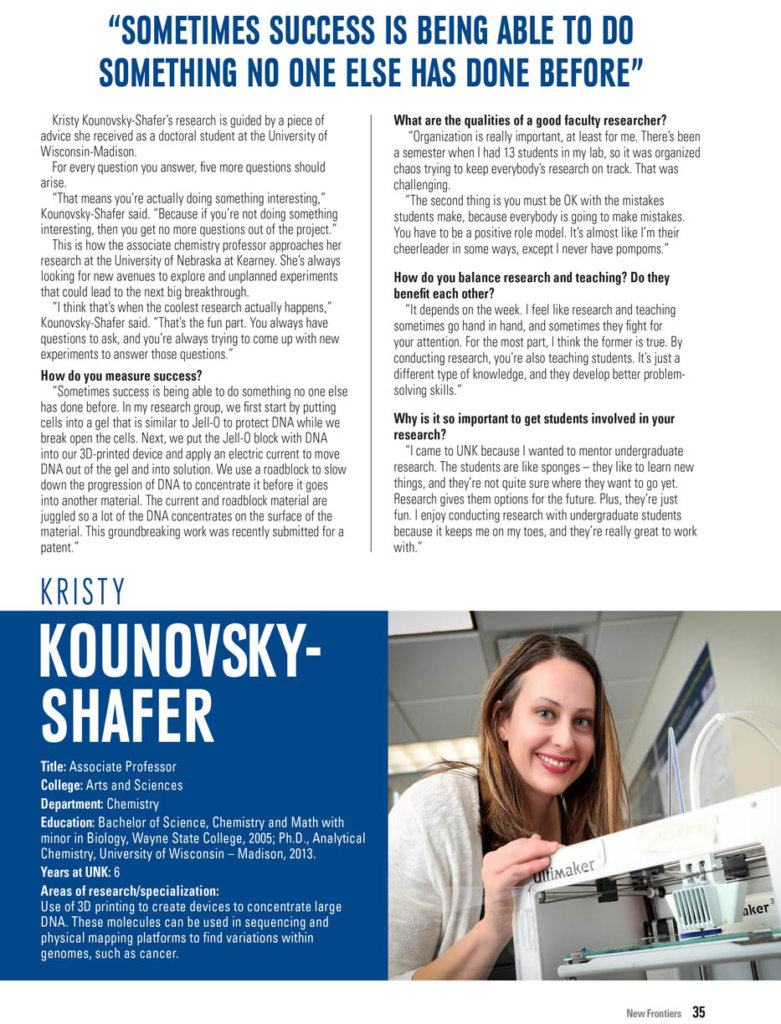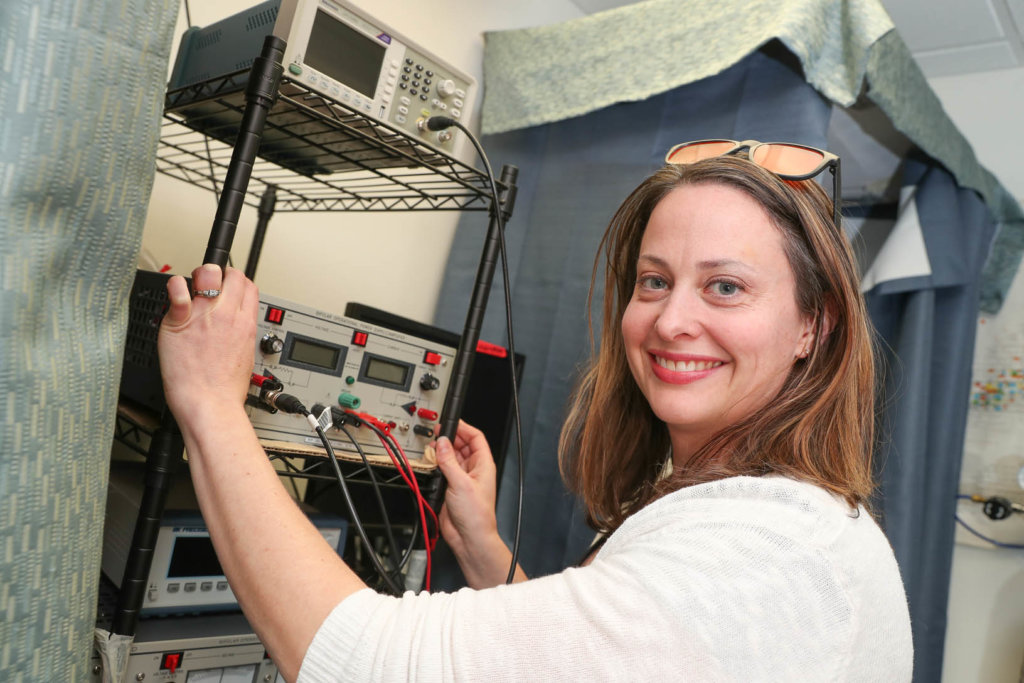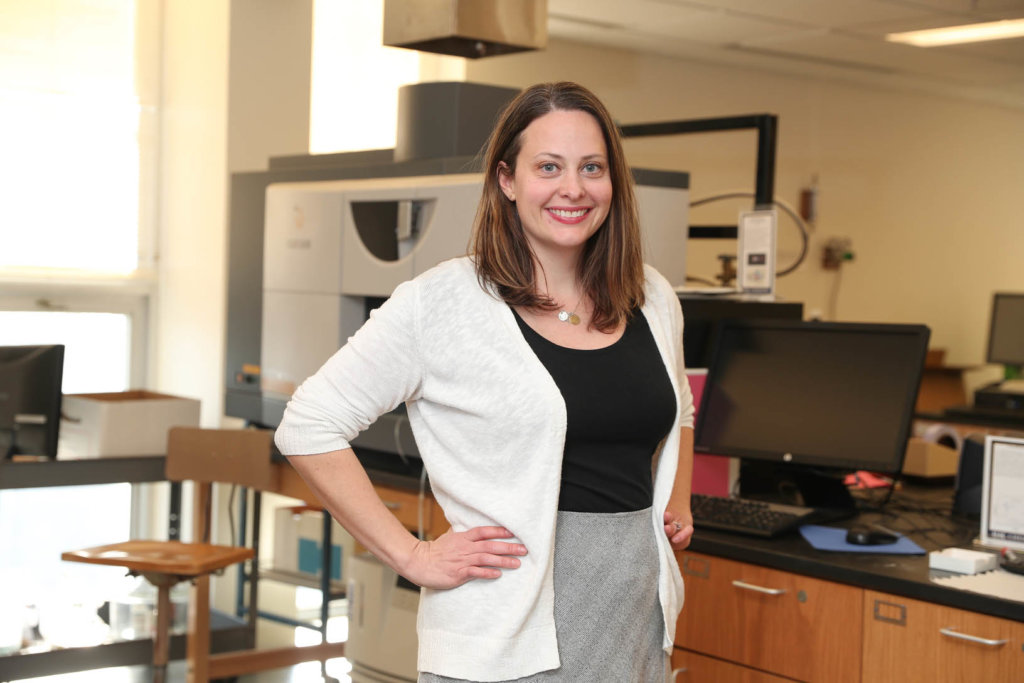
Kristy Kounovsky-Shafer’s research is guided by a piece of advice she received as a doctoral student at the University of Wisconsin-Madison.
For every question you answer, five more questions should arise.
“That means you’re actually doing something interesting,” Kounovsky-Shafer said. “Because if you’re not doing something interesting, then you get no more questions out of the project.”
This is how the associate chemistry professor approaches her research at the University of Nebraska at Kearney. She’s always looking for new avenues to explore and unplanned experiments that could lead to the next big breakthrough.
“I think that’s when the coolest research actually happens,” Kounovsky-Shafer said. “That’s the fun part. You always have questions to ask, and you’re always trying to come up with new experiments to answer those questions.”
How do you measure success?
“Sometimes success is being able to do something no one else has done before. In my research group, we first start by putting cells into a gel that is similar to Jell-O to protect DNA while we break open the cells. Next, we put the Jell-O block with DNA into our 3D-printed device and apply an electric current to move DNA out of the gel and into solution. We use a roadblock to slow down the progression of DNA to concentrate it before it goes into another material. The current and roadblock material are juggled so a lot of the DNA concentrates on the surface of the material. This groundbreaking work was recently submitted for a patent.”
What are the qualities of a good faculty researcher?
“Organization is really important, at least for me. There’s been a semester when I had 13 students in my lab, so it was organized chaos trying to keep everybody’s research on track. That was challenging.
“The second thing is you must be OK with the mistakes students make, because everybody is going to make mistakes. You have to be a positive role model. It’s almost like I’m their cheerleader in some ways, except I never have pompoms.”
How do you balance research and teaching? Do they benefit each other?
“It depends on the week. I feel like research and teaching sometimes go hand in hand, and sometimes they fight for your attention. For the most part, I think the former is true. By conducting research, you’re also teaching students. It’s just a different type of knowledge, and they develop better problem- solving skills.”
Why is it so important to get students involved in your research?
“I came to UNK because I wanted to mentor undergraduate research. The students are like sponges – they like to learn new things, and they’re not quite sure where they want to go yet. Research gives them options for the future. Plus, they’re just fun. I enjoy conducting research with undergraduate students because it keeps me on my toes, and they’re really great to work with.”

KRISTY KOUNOVSKY-SHAFER
Title: Associate Professor
College: Arts and Sciences
Department: Chemistry
Education: Bachelor of Science, Chemistry and Math with minor in Biology, Wayne State College, 2005; Ph.D., Analytical Chemistry, University of Wisconsin – Madison, 2013.
Years at UNK: 6
Areas of research/specialization: Use of 3D printing to create devices to concentrate large DNA. These molecules can be used in sequencing and physical mapping platforms to find variations within genomes, such as cancer.
